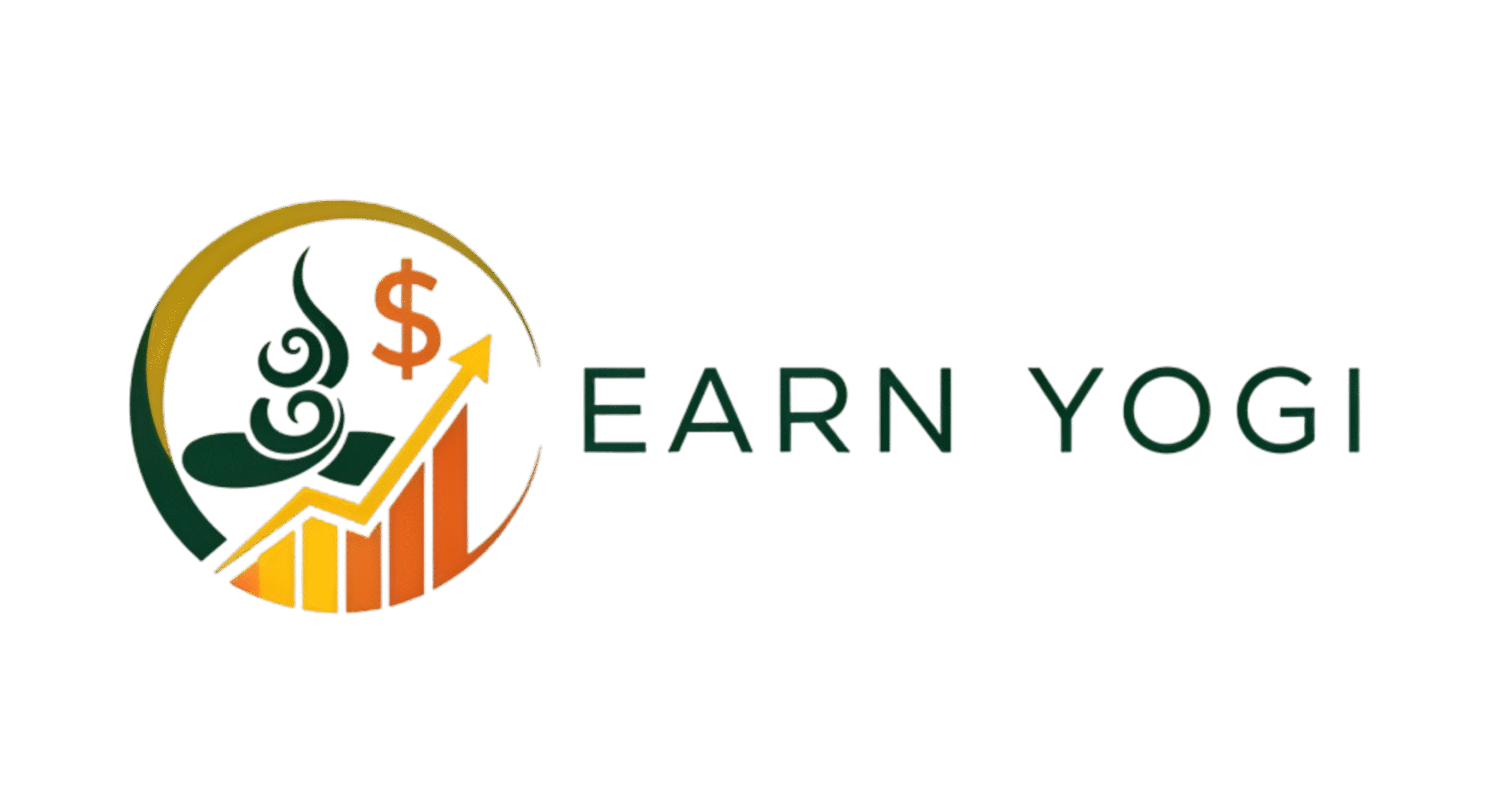1. Why Digital Products? The Big Picture
Look, these days, if it ain’t online, does it even exist? Digital products—think e-books, online classes, snazzy templates, or whatever app you dream up—are basically everywhere. No boxes piling up in your garage, no late-night runs to the post office. You make it once, and bam, it can keep making you cash while you’re binge-watching Netflix. But hey, don’t let anyone fool you: this whole thing kicks off with some wild idea in your head and, if you’re lucky (and stubborn), ends with actual people dropping real money on your stuff. So yeah, buckle up. This ride gets messy, confusing, and, honestly, pretty damn fun.

2. Finding Your Niche: Where Passion Meets Market Demand
a. Start with Your Interests and Strengths
So, what actually gets you hyped? Like, what’s your thing—are you killer with Photoshop, a low-key code wizard, love breaking stuff down for people, or just have a weird talent for turning total messes into organized bliss? Honestly, where your skills and your excitement overlap? That’s your launch pad, right there.
b. Research the Market
Scroll through Reddit, Quora, or those wild Facebook groups—basically, anywhere folks gather to rant, vent, and occasionally help each other out. You’ll start spotting the same headaches popping up again and again. Like, if you keep seeing designers whining about how annoying it is to whip up mockups? Ding ding, opportunity alert. Maybe what the world needs is a killer mockup template bundle. Just saying.

c. Validate the Idea
Don’t waste a month grinding away before you even know if anyone cares. Just toss up a quick poll on your socials or slap together one of those “coming soon” pages—honestly, Linktree or a janky Google Form works fine. If a few folks actually bother to drop their email? Boom, you might be onto something.
3. Picking the Right Format for Your Product
Digital products come in a wide variety, and the best choice depends on your audience and what you enjoy creating. Here’s a breakdown of popular options to consider:
E-books or Guides
Perfect for those who can organize their thoughts into clear, structured content. If you love outlining and writing, this is your space to shine.
- Best for: Writers, researchers, or anyone with expertise to share.
- Why it works: People value well-organized, actionable information in a downloadable format.
Online Courses or Workshops
Ideal for those who enjoy teaching and don’t mind being on camera or recording tutorials. If you love guiding others step-by-step, this is a great fit.
- Best for: Educators, coaches, or subject-matter experts.
- Why it works: Interactive learning is in high demand for skill-building.
Templates and Printables
A hit with planners, designers, teachers, or finance enthusiasts. These are quick to create and highly sought after.
- Best for: Organized creators with a knack for design or systems.
- Why it works: Ready-to-use tools save people time and effort.
Stock Assets
Think icons, fonts, or stock photos. If you’re skilled in design tools like Photoshop, this could be your creative outlet.
- Best for: Graphic designers, photographers, or illustrators.
- Why it works: Businesses and creators need high-quality visuals for projects.
Software or Apps
This is for coders who can build tools like plugins or automation scripts to simplify tasks, like streamlining spreadsheets.
- Best for: Developers and tech enthusiasts.
- Why it works: Solves specific problems with practical, reusable solutions.
Audio Products
From music to meditations to podcasts, audio is a great medium if you have a good microphone and something worth sharing.
- Best for: Musicians, speakers, or mindfulness coaches.
- Why it works: Audio is portable and connects with audiences on a personal level.
Pro Tip: Bundle for Value
You don’t have to pick just one. Combine products to create more value:
- Pair an e-book with matching templates.
- Offer a mini-course with a downloadable cheat sheet.
Mix and match to suit your style and audience needs for maximum impact.
4. Creating the Product: Quality Matters
a. Planning & Structure
E-books? Gotta map those chapters out first, like you’re drawing the world’s nerdiest treasure map. Seriously, treat it like a baby textbook—chapter skeletons, then fill in the guts section by section. No one wants to get lost halfway through.
Courses: Don’t just wing it—build a curriculum. Slice your info into bite-sized chunks (like, 10-15 minutes tops or people will bail). Keep it snackable.
Templates: Figure out what people actually need (spoiler: probably planners and dashboards, not that weird expense tracker you love). Then mess around with the look—colors, fonts, whatever vibes.
Software: Doodle some wireframes, jot down your must-have features, and pick your tech stack. Don’t go overboard—no one’s coding Facebook 2.0 here.
b. Tools of the Trade
Writing: Old school Google Docs or Word will do the trick, but if you wanna get fancy, Scrivener is a beast for long stuff.
Design: Canva is stupid-easy for noobs. Feeling spicy? Go for Illustrator or Photoshop, or Affinity if you don’t wanna pay Adobe’s rent.
Course Videos: Loom for quick screen shares, OBS if you’re a control freak, and Otter.ai when you’re too lazy to transcribe your rants.
Audio: Audacity’s free and does the job, unless you’re making a Grammy-winning podcast, then maybe try Audition or GarageBand.
Software Prototyping: Figma or Adobe XD for all your “move this box three pixels left” needs.
c. Quality Control
Don’t trust yourself—get some folks to poke holes in your stuff. Beta readers, alpha testers, your grandma, whoever. Proofread with Grammarly or ProWritingAid, or just toss a freelance editor fifty bucks on Fiverr or Upwork to catch your dumb typos.
Last step: Click every link, open every file, make sure your videos aren’t just an hour of dead air. Basically, pretend you’re your own worst customer and try to break it.
5. Packaging & Designing for Appeal
Let’s be real—people totally judge a book by its cover. Doesn’t matter if your product’s a masterpiece inside; if it looks janky, folks are gonna swipe left.
a. Thumbnails & Covers That Don’t Suck
Seriously, spend some time in Canva or Photoshop. Slap together something sleek, modern, you know, actually eye-catching. Whether it’s an e-book cover or a course thumbnail, you want people to stop scrolling and think, “Dang, that looks legit.”
b. Layouts That Don’t Make You Cry
E-books? Use headers so people aren’t lost in a wall of text. Bullet points are your friends. Don’t be afraid of a little white space—it lets everything breathe.
Courses? For the love of all that’s holy, label your modules. No one wants to play detective just to find the next lesson.
Templates? Throw in a quick-start guide or record a chill screen-share walkthrough. People don’t want to guess how your thing works—they want to hit the ground running. Make it easy, and they’ll actually stick around.
6. Nailing Your Price Tag
Pricing? Oh man, it’s not just plugging numbers into a spreadsheet—it’s all about vibes, psychology, and a pinch of showing off, honestly.
a. Stalk Your Competition (In a Friendly Way)
Don’t just peek at what others are charging—look at what they’re actually selling. Is their e-book 20 pages or 200? Does their course come with fancy videos or just PDF slides? Design, format, length—all that jazz matters.
E-books: People usually slap anywhere from $9 to $29 on these. Some go higher, but that’s rare air.
Courses: This one’s wild. You’ll see stuff from $49 all the way to $499, and for extra-niche or “I’ll change your life” content, some folks shoot for $1,000-plus. No shame in their game.
Templates: These are often dirt cheap—like $5 to $15 each, or you can bundle ‘em up for $20, $30, maybe $50 if you’re feeling bold.
Software: Pricing is all over the place. Basic SaaS can run $20 a month, but if you’ve got something really slick? People might drop $100+ for a one-off license.
b. Charge for Value, Not Just Your Time
If your customer can make their money back—or heck, double it—by using your stuff, they’ll see it as an investment instead of just another expense. Think about it: “Take this course, land a client, make $500.” Suddenly that $100 course? Feels like a bargain.
c. Time-Limited Discounts & Fancy Tiers
Launching something new? Throw in a flash sale—“Early Bird gets 20% off!” works way better than you’d think. And hey, don’t forget to play with pricing levels. Basic, Plus, Premium—sprinkle in some coaching calls, extra templates, or worksheets for the high-rollers. People love feeling like they’re getting the VIP treatment.
7. Picking Where to Sell Your Stuff
Alright, so—where the heck are you gonna sell your amazing product? Let’s break it down.
Marketplaces (like Gumroad, Etsy, Creative Market): Okay, these are basically the shopping malls of the internet. Tons of people already hanging around, so you don’t have to beg for attention. Setup’s a breeze.
Downside? They’ll take a little cut (5–10%, ouch), and honestly, your shop looks like every other shop. Good luck building your own vibe.
Your Own Website (think Shopify, or WordPress with WooCommerce): Now we’re talkin’. You’re the boss—branding, pricing, the whole shebang. You even get everyone’s email (hello, email list!).
But yeah, it’s more work. You have to actually build the thing, pay for hosting, deal with payment stuff, and fix things when they break (and, trust me, they will).
Course Platforms (Teachable, Thinkific, Kajabi): If you’re selling courses, these are a no-brainer. Built-in quizzes, student tracking, fancy certificates—basically the Hogwarts for online classes.
All-in-One Tools (Podia, Gumroad Pro, Payhip): Can’t be bothered with a million apps? These tools cram everything into one dashboard—products, payments, emails, even affiliate programs. Less headache, more chill.
Want to test physical product ideas without dealing with inventory? Here’s a step-by-step guide to starting a dropshipping business even if you’re on a tight budget.
8. Marketing Stuff That Actually Delivers
a. Build Your Squad First
Honestly, don’t even think about selling until you’ve got people actually listening. Start a newsletter—Mailchimp, ConvertKit, whatever’s not a headache. Bribe folks (nicely) with a killer freebie. Solve a tiny pain point for them, and boom, they’ll trust you and fork over their email.
b. Content & SEO
Blog about the questions people are actually Googling. “How do I make Notion planner templates?” That kind of stuff. Or be brave—film a YouTube tutorial or just whip up a TikTok showing what your thing actually does. People love real demos.
c. Social Media
Don’t try to be everywhere; you’ll burn out. Pick your poison: Instagram for pretty stuff, LinkedIn for the suit crowd, TikTok if you can keep it snappy. Show the messy behind-the-scenes, customer wins, even your fails sometimes. Feels way more human.
d. Paid Ads (If You’re Feeling Fancy)
Once you know people actually want what you’ve got, try some ads—but keep it chill. Facebook, Insta, Google, whatever fits. Don’t pour your rent money into it. Test the waters, see if anyone bites.
e. Hype It Up When You Launch
Find micro-influencers who actually get your vibe. Even a tiny shoutout can move the needle. Or, run a giveaway—bundle your stuff with someone else’s. People love free things, it’s science.
f. Affiliate Hustle
Set up affiliate links or “bring a friend” deals. Give people a reason to talk about you. Everybody wins—or at least, you get more eyeballs.
9. Trust: Not Just for Real People
a. Flex That Social Proof
Nobody wants to buy from a ghost. Toss up some real testimonials. Like, “Jennifer grabbed this guide and snagged her first freelance gig in two weeks.” That’s the kind of stuff people wanna see.
b. Brag About Results
Let folks show off their wins. Seriously—encourage them to post screenshots or stories on Insta or Twitter. People love seeing proof that stuff actually works (and hey, it’s free promo for you).
c. Actually Help People
Set up an email, or toss everyone into a private Discord or Facebook group. Somewhere folks can ask questions and not feel lost. Happy, supported users? They stick around—and usually come back for more.
d. Keep Things Fresh
Update your product once in a while and—this is key—tell people about it. Nobody likes buying something that gets dumped and forgotten. Show you care. That’s how you keep the trust rolling.
10. Actually Growing, Not Just Getting Bigger
a. Squeeze More Outta What You’ve Got
Wrote an e-book? Chop it up into bite-sized videos.
Got some templates? Mash ‘em into bundles, remix the themes, sell ‘em again.
Made a cool plugin? Stack on some juicy add-ons and watch folks throw money at you.
b. Upsell, Baby, Upsell
Give people a fancier version—charge more, make it sparkle. Or just bundle stuff together and call it the “Pro Pack.” People eat that up.
c. Subscriptions & Memberships—The “Never Leave Me” Model
Build a crew. Maybe a private group, or some kinda ongoing coaching gig. Drop new templates, host live Q&As, toss in the occasional webinar—keep ‘em hooked, paying monthly.
d. Team Up or Cash In on Licensing
Let agencies use your templates for a fee. Or sneak your stuff into someone else’s platform and collect a cut every time someone hits “Buy Now.” Easy money, honestly.
11. Smashing Through Roadblocks
a. Freaking Out About Launching
Let’s be real—almost everyone gets the “my product sucks” jitters before going live. News flash: nobody’s first version is flawless. Ship it anyway. Tweak it later. Perfection is overrated.
b. Crickets After Launch
Barely any sales at the start? Yeah, that’s normal. Don’t panic. Keep shouting about it, ask people what’s up, and don’t be afraid to switch up your pitch. Hustle mode stays on.
c. Time Slipping Away
If you treat this like an afterthought, it’ll act like one. Block out time on your calendar like it’s an important date—no ghosting allowed. Your project deserves the respect.
d. Tweak, Test, Repeat
Nerd out on your numbers—seriously. Which pages are actually converting? Which posts get people signing up? Dive into Google Analytics or whatever stats tool you like. Let the data boss you around a bit.
12. Real‑World Examples
Alright, let’s get into the juicy stuff—actual people, doing actual things (and not just those perfect-case unicorns you see on LinkedIn).
Example 1: Printables
So, Sarah—she whipped up a bunch of weekly meal planners on Canva. Honestly, nothing fancy, but people love organization, right? She slapped a $9 price tag on each, then went wild on Pinterest and Insta. The result? In six months, she sold 2,000 copies (no joke) and then rolled out fitness planners because, hey, why stop when you’re on a roll?
Example 2: Tech Course
Then there’s Alex. Dude’s a developer and decided, “You know what? I’ll record a Python automation course.” He kicked things off with an early bird deal, collected some glowing reviews on his blog, and just kept bumping the price up as demand grew. Now? Those sales bankroll his full-time gig. Not bad for a side hustle gone wild.
Example 3: Design Templates
And we can’t forget Mia. She put together these slick PowerPoint template packs—three flavors: Modern, Minimal, and Colorful. Instead of dumping them on some overcrowded marketplace, she self-hosted on Gumroad (total boss move) and threw in a special teacher discount. Now she’s pulling in over $3k a month. That’s rent money, right there.
13. Long-Term Playbook
- Never stop tweaking—seriously, every product can get better if you listen to what folks are saying. Feedback isn’t just noise; it’s pure gold.
- Don’t put all your eggs in one basket. Try new stuff! Maybe you’ve got a killer ebook, but who says you can’t launch a course or a podcast? The world’s your buffet—grab a little bit of everything.
- Get loud in more places. Webinars, podcasts, guest posts—if there’s an audience, crash the party. You never know where your best fans will turn up.
- Work smarter, not harder. Virtual assistants exist for a reason—let them handle support headaches. Tools like Zapier? They’re your new best friends for automating the boring stuff so you can actually breathe.
- Stay hungry. There’s always something new going on—some weird little blog, some random webinar, a course you never thought you’d take. Dive in. The day you stop learning is the day you start fading out.
If you’re ready to monetize your content, check out this list of the top affiliate marketing programs for bloggers to find partners that match your niche.
FAQs
What digital products sell best?
Courses, templates, e-books, and software—especially in business, productivity, or education.
Do I need tech skills?
Nope. Tools like Canva and Gumroad are beginner-friendly.
Can I sell without a website?
Yes. Use platforms like Etsy, Gumroad, or Payhip.
How do I stop people from stealing my product?
Use watermarks, secure platforms, and license terms.
Is it expensive to start?
Not at all. Many creators start with under $100—or even free tools.
How do I promote my product?
Build an email list, post content, and share on social media.
Is digital product income really passive?
Eventually, yes—but it takes upfront work and smart automation.
14. Wrapping It Up

Honestly, getting an idea out of your head and into the wild as a legit digital product? It’s a wild ride. You’ll screw up, learn a ton, probably question your life choices at least twice, but that’s all part of the story. Start scrappy, move fast, actually talk to real people (yeah, scary, I know), and let their feedback slap your ego around a bit. That’s how you end up with something real—something that doesn’t just sit there, but actually pays the bills. At the end of the day, what do you get? Freedom, bragging rights, and that weirdly satisfying feeling when you see your thing making someone’s life better. Not too shabby.
Must Read –



